Joachim de Posada says, Don't eat the marshmallow yet | Video on TED.com
Wednesday 10 August 2011
Joachim de Posada says, Don't eat the marshmallow yet | Video on TED.com
Posted by Balqis Thaahaveetil at 11:39 0 comments
Monday 1 August 2011
Subway Personality: The MBTI Map
Subway Personality: The MBTI Map
by Maria PopovaWhat your subway station has to do with your propensity for extroversion.
We love psychology. We love data visualization. So we’re all over the MBTI Map, a visualization showing the relationships between human personality descriptors from the Myers-Briggs Type Indicator test — a tool designed to make iconic Swiss psychologist Carl Jung’s theory of psychological types more digestible — using subway lines as a metaphor for the connections between the different representative words and personality types.

A product of the Integrated Design Laboratory at Korea’s Ajou University, the map is a rare application of information design to the fields of psychology and sociology — and a brave effort to capture something as vague and abstract as personality visually and concretely.
Using the 161 words in the MBTI test, the team conducted a survey asking the relative closeness between pairs of words. Using cluster analysis, they extracted a total of 39 representative words. These were then arranged spatially usingmultidimensional scaling (MDS), which explores the similarities and dissimilarities of data, and wrapped in a subway metaphor.

Each subway line represents one of the 16 MBTI personality types, with subway stations arranged based on the semantic distance of the 39 word descriptors based on the MDS analysis. The outer circle contains the 161 original word descriptors from the test, grouped in 8 layers based on their hierarchical order. Finally, the colors of the words intuitively represent their meaning — so “calm” is in the blue spectrum and “passionate” in the red.
Pore over the brilliantly crafted map in this high-res PDF. And why not kill a few hours by taking one of these Jung-inspired tests, each resulting in a four-letter personality type, then finding yourself on the map? They aren’t the real MBTI deal, but they’re free and a ton of fun.
Posted by Balqis Thaahaveetil at 13:47 0 comments
7 Must-Read Books on Music, Emotion & the Brain
7 Must-Read Books on Music, Emotion & the Brain
by Maria PopovaWhat Freud has to do with auditory cheesecake, European opera and world peace.
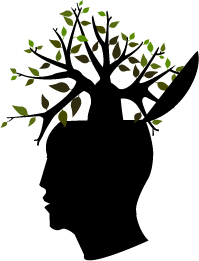 Last year, Horizon’s fascinating documentary on how music works was one of our most-liked pickings of 2010. But perhaps even more fascinating than the subject of how music works is the question of why it makes us feel the way it does. Today, we try to answer it with seven essential books that bridge music, emotion and cognition, peeling away at that tender intersection of where your brain ends and your soul begins.
Last year, Horizon’s fascinating documentary on how music works was one of our most-liked pickings of 2010. But perhaps even more fascinating than the subject of how music works is the question of why it makes us feel the way it does. Today, we try to answer it with seven essential books that bridge music, emotion and cognition, peeling away at that tender intersection of where your brain ends and your soul begins. MUSICOPHILIA
MUSICOPHILIA
 We love the work of neuroscientist and prolific author Oliver Sacks, whose latest book, The Mind’s Eye, was one of our favorite brain books last year. But some of his most compelling work has to do with the neuropscyhology of how music can transform our cognition, our behavior, and our very selves. InMusicophilia: Tales of Music and the Brain, Revised and Expanded Edition, Sacks explores the most extreme of these transformations and how simple harmonies can profoundly change lives. From clinical studies to examples from pop culture — did you know that Ray Charles believed he was “born with the music inside [him]“? — Sacks delivers a fascinating yet remarkably readable tale that tells the story, our story, of humanity as a truly “musical species.”
We love the work of neuroscientist and prolific author Oliver Sacks, whose latest book, The Mind’s Eye, was one of our favorite brain books last year. But some of his most compelling work has to do with the neuropscyhology of how music can transform our cognition, our behavior, and our very selves. InMusicophilia: Tales of Music and the Brain, Revised and Expanded Edition, Sacks explores the most extreme of these transformations and how simple harmonies can profoundly change lives. From clinical studies to examples from pop culture — did you know that Ray Charles believed he was “born with the music inside [him]“? — Sacks delivers a fascinating yet remarkably readable tale that tells the story, our story, of humanity as a truly “musical species.”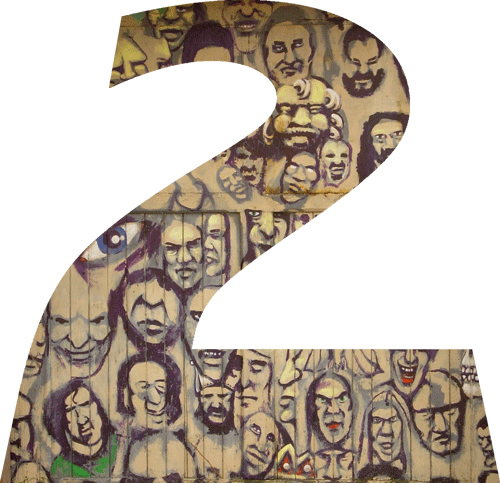 THIS IS YOUR BRAIN ON MUSIC
THIS IS YOUR BRAIN ON MUSIC
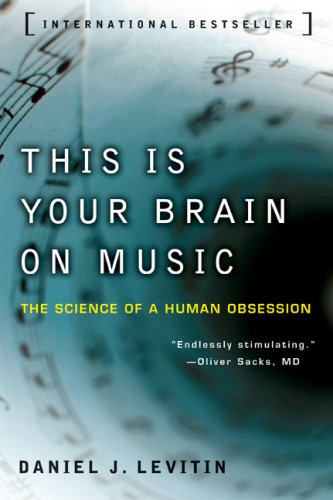 Why music makes us feel the way it does is on par with questions about the nature of divinity or the origin of love. In This Is Your Brain on Music: The Science of a Human Obsession, Daniel Levitin sets out to answer it — an ambitious task he tackles through a range of lenses, from a digestible explanation of key technical constructs like scale, tone and timbre to compelling cross-disciplinary reflections spanning neurobiology, philosophy, cognitive psychology, memory theory, behavioral science, Gestalt psychology and more. He illuminates diverse subjects like what accounts for the diversity of musical tastes and what makes a music expert, framing music processing as a fundamental cognitive function embedded in human nature. Most impressively, however, Levitin manages to do this while preserving the without subtracting from the intuitive, intangible magic of powerful music, dissecting its elements with the rigor of a researcher while preserving its magnetism with the tenderness of a music lover.
Why music makes us feel the way it does is on par with questions about the nature of divinity or the origin of love. In This Is Your Brain on Music: The Science of a Human Obsession, Daniel Levitin sets out to answer it — an ambitious task he tackles through a range of lenses, from a digestible explanation of key technical constructs like scale, tone and timbre to compelling cross-disciplinary reflections spanning neurobiology, philosophy, cognitive psychology, memory theory, behavioral science, Gestalt psychology and more. He illuminates diverse subjects like what accounts for the diversity of musical tastes and what makes a music expert, framing music processing as a fundamental cognitive function embedded in human nature. Most impressively, however, Levitin manages to do this while preserving the without subtracting from the intuitive, intangible magic of powerful music, dissecting its elements with the rigor of a researcher while preserving its magnetism with the tenderness of a music lover.Never ones to pass up a good ol’ fashioned erudite throw-down, we can’t resist pointing out that the book’s final chapter, The Music Instinct, may be the juciest: It’s a direct response to Harvard psycholinguist Steven Pinker, who in a 1997 talk famously called music “auditory cheesecake” and dismissed it as evolutionarily useless, displacing demands from areas of the brain that should be handling more “important” functions like language. (Obviously, as much as we love Pinker, we think he’s dead wrong.) Levitin debunks this contention with a mighty arsenal of research across anthropology, history and cognitive science, alongside chuckle-worthy pop culture examples. (It’s safe to assume that it was musical talent, rather than any other, erm, evolutionary advantage, that helped Mick Jagger propagate his genes.)
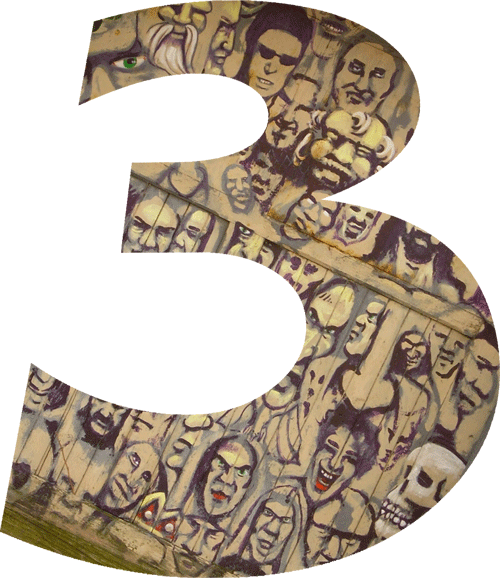 MUSIC, LANGUAGE, AND THE BRAIN
MUSIC, LANGUAGE, AND THE BRAIN
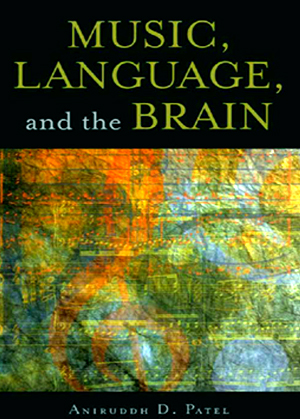 As if to drive a stake through the heart of Levitin and Pinker’s debate,Music, Language, and the Brain by Aniruddh Patel — both a musician himself and one of the greatest living neuroscientists — dissects the unique neuropsychological relationship between two of the most unique hallmarks of our species. Rigorously researched and absorbingly narrated, the book traces the origins of humanity’s understanding of this correlation, dating as far back as the philosophical debates of Ancient Greece, and challenges the scientific community’s longstanding assumption that music and language evolved independently of one another. It’s the kind of read that will leave you at once astounded by how much you’ve learned about its subject and keenly aware of how little you — how little we, as a culture — know about it.
As if to drive a stake through the heart of Levitin and Pinker’s debate,Music, Language, and the Brain by Aniruddh Patel — both a musician himself and one of the greatest living neuroscientists — dissects the unique neuropsychological relationship between two of the most unique hallmarks of our species. Rigorously researched and absorbingly narrated, the book traces the origins of humanity’s understanding of this correlation, dating as far back as the philosophical debates of Ancient Greece, and challenges the scientific community’s longstanding assumption that music and language evolved independently of one another. It’s the kind of read that will leave you at once astounded by how much you’ve learned about its subject and keenly aware of how little you — how little we, as a culture — know about it.It’s worth noting that Music, Language, and the Brain makes a fine addition to our list of 5 must-read books about language.
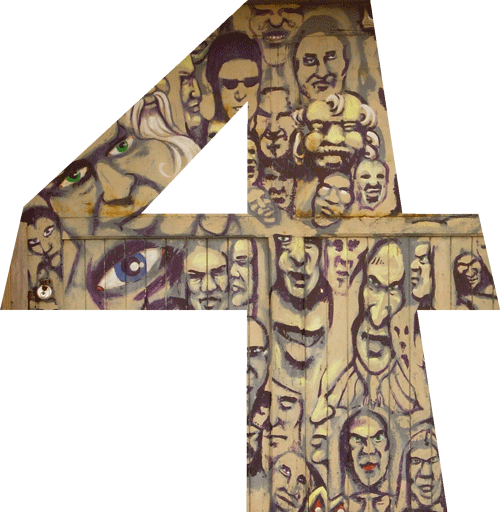 LISTEN TO THIS
LISTEN TO THIS
 In 2008, New Yorker music critic Alex Ross published The Rest Is Noise: Listening to the Twentieth Century — a remarkable historical and social context for contemporary music, which went on to become one of the most influential music history books ever written. Last fall, Ross released his highly anticipated sequel: Listen to This — an outstanding effort to explain and understand the world through its musical proclivities, from European opera to Chinese classical music to Bjork. Though the book, an anthology of the author’s most acclaimed essays with a deeper focus on classical music, is further removed from neuroscience than the rest on this list, Ross’s astute observations on the emotional and social experience of music make it an indispensable addition nonetheless.
In 2008, New Yorker music critic Alex Ross published The Rest Is Noise: Listening to the Twentieth Century — a remarkable historical and social context for contemporary music, which went on to become one of the most influential music history books ever written. Last fall, Ross released his highly anticipated sequel: Listen to This — an outstanding effort to explain and understand the world through its musical proclivities, from European opera to Chinese classical music to Bjork. Though the book, an anthology of the author’s most acclaimed essays with a deeper focus on classical music, is further removed from neuroscience than the rest on this list, Ross’s astute observations on the emotional and social experience of music make it an indispensable addition nonetheless.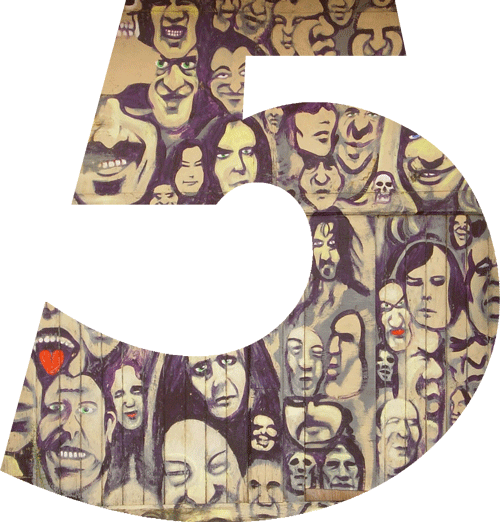 MUSIC, THE BRAIN AND ECSTASY
MUSIC, THE BRAIN AND ECSTASY
 If the human voice is the greatest instrument, as the widespread music teacher preaching goes, then the brain is the greatest composer. Every time we perform, compose or merely listen to music, the brain plays high-level Tetris with a range of devices, harmonies and patterns, creating emotional meaning out of the elements of sound and often extracting intense pleasure. In Music, The Brain, And Ecstasy: How Music Captures Our Imagination, composer Robert Jourdain examines music’s unusual emotive power through little-known facts and physiological phenomena and historical anecdotes. Perhaps most fascinatingly, he pins down the origin of pleasure in music as a consequence of a series of tonal deviations that create a conflict in the brain, resolved with a return to the tonal center, which gives us a sensation of bliss. This sequence of conflict and resolution, he explains, can come from the four key elements of music: rhythm, melody. phrase, and harmony. “Ecstasy” is the result of a resolution that comes once a conflict has reached the limit of the listener’s comprehension ability in tonal space-time.
If the human voice is the greatest instrument, as the widespread music teacher preaching goes, then the brain is the greatest composer. Every time we perform, compose or merely listen to music, the brain plays high-level Tetris with a range of devices, harmonies and patterns, creating emotional meaning out of the elements of sound and often extracting intense pleasure. In Music, The Brain, And Ecstasy: How Music Captures Our Imagination, composer Robert Jourdain examines music’s unusual emotive power through little-known facts and physiological phenomena and historical anecdotes. Perhaps most fascinatingly, he pins down the origin of pleasure in music as a consequence of a series of tonal deviations that create a conflict in the brain, resolved with a return to the tonal center, which gives us a sensation of bliss. This sequence of conflict and resolution, he explains, can come from the four key elements of music: rhythm, melody. phrase, and harmony. “Ecstasy” is the result of a resolution that comes once a conflict has reached the limit of the listener’s comprehension ability in tonal space-time.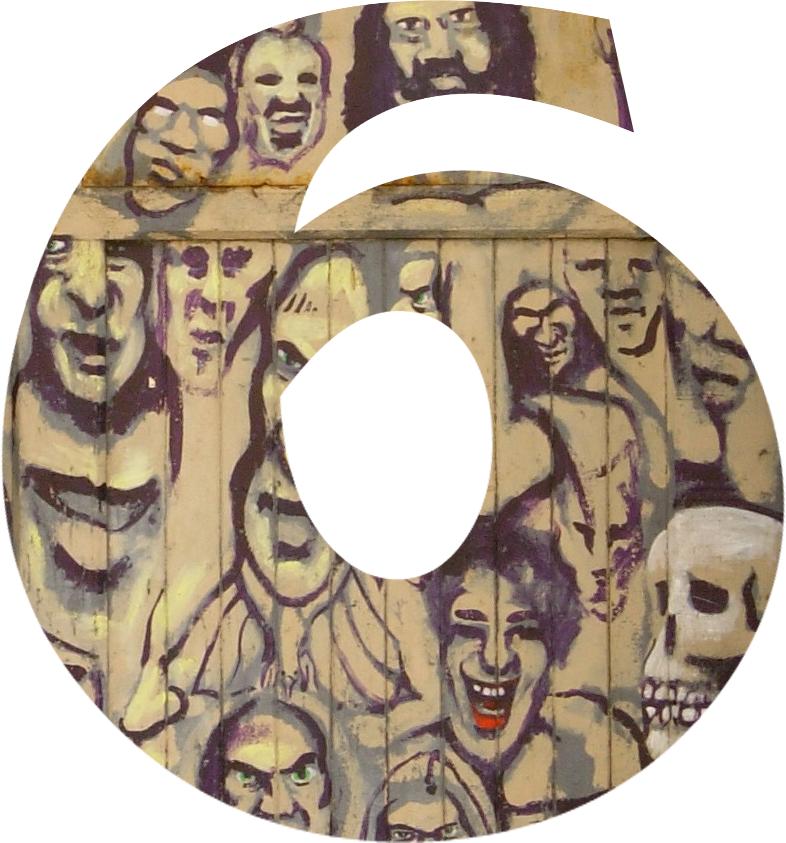 THE TAO OF MUSIC
THE TAO OF MUSIC
 Traditional self-help books are the pesky cold sore swapped between the lips of legitimate literature and serious psychology. And then there are the books that actually help the self in smart, non-pedantic ways involving no worksheets or mirror nodding. That’s exactly what John Ortiz does in The Tao of Music: Sound Psychology, blending the extraordinary power of music with the principles of Taoist philosophy to deliver an unusual yet captivating proposition: You can enlist your music library in improving your performance and state of mind across everyday challenges like keeping anger at bay, breaking the spell of procrastination, learning to be fully present with romantic relationships, and mastering the art of true relaxation. Through cognitive-behavioral exercises, meditative techniques and melodic visualizations, Ortiz offers a powerful music-driven toolkit for navigating life’s obstacles, and even curates specific “musical menus” of songs and melodies that target specific emotional states and psychological dispositions.
Traditional self-help books are the pesky cold sore swapped between the lips of legitimate literature and serious psychology. And then there are the books that actually help the self in smart, non-pedantic ways involving no worksheets or mirror nodding. That’s exactly what John Ortiz does in The Tao of Music: Sound Psychology, blending the extraordinary power of music with the principles of Taoist philosophy to deliver an unusual yet captivating proposition: You can enlist your music library in improving your performance and state of mind across everyday challenges like keeping anger at bay, breaking the spell of procrastination, learning to be fully present with romantic relationships, and mastering the art of true relaxation. Through cognitive-behavioral exercises, meditative techniques and melodic visualizations, Ortiz offers a powerful music-driven toolkit for navigating life’s obstacles, and even curates specific “musical menus” of songs and melodies that target specific emotional states and psychological dispositions. MUSIC AND THE MIND
MUSIC AND THE MIND
 Nearly two decades after its original publication, Anthony Storr’s Music and the Mind remains an essential and timeless prism for looking at one of humanity’s greatest treasures. From the biological basis of cognition to a thoughtful analysis of the views held by history’s greatest philosophers to the evolution of the Western tonal system, Storr addresses some of the most fundamental questions about music, like why a minor scale always sounds sad and a major scale happy, and offers an evidence-backed yet comfortingly human grand theory for the very purpose of music: Peace, resolution and serenity of spirit.
Nearly two decades after its original publication, Anthony Storr’s Music and the Mind remains an essential and timeless prism for looking at one of humanity’s greatest treasures. From the biological basis of cognition to a thoughtful analysis of the views held by history’s greatest philosophers to the evolution of the Western tonal system, Storr addresses some of the most fundamental questions about music, like why a minor scale always sounds sad and a major scale happy, and offers an evidence-backed yet comfortingly human grand theory for the very purpose of music: Peace, resolution and serenity of spirit.Posted by Balqis Thaahaveetil at 13:46 0 comments
Isaac Asimov on Science and Creativity in Education
Isaac Asimov on Science and Creativity in Education
by Maria PopovaWhat vintage science fiction has to do with the future of self-directed learning.
 We’re deeply fascinated by how the past envisioned the future. Previously:retrofuturistic artwork, Orson Welles’ Future Shock techno-paranoia, a vision for the iPad 23 years before the iPad, Marshall McLuhan’s“global village” concept, and a living timecapsule of futurism by cultural luminaries.
We’re deeply fascinated by how the past envisioned the future. Previously:retrofuturistic artwork, Orson Welles’ Future Shock techno-paranoia, a vision for the iPad 23 years before the iPad, Marshall McLuhan’s“global village” concept, and a living timecapsule of futurism by cultural luminaries.Today, we cross this retro-fascination with your keen interest in the future of creativity in education and turn to legendary sci-fi authorIsaac Asimov, the quintessential futurist, interviewed here by Bill Moyers in 1988. Recorded upon the publication of Assimov’s 391st book, Prelude to Foundation, this three-part interview offers a rare peek inside one of history’s most fascinating minds. Asimov shares invaluable insights on science, computing, religion, population growth and the universe, and echoes some of own beliefs in the power of curiosity-driven self-directed learning and the need to implement creativity in education from the onset.
Eventually, Asimov predicts not only the very birth of the Internet, but also a number of today’s digital darlings, from standbys like Wikipedia to hot-shots du jour like Quora, as well as recently buzzword-wrapped concepts like Clay Shirky’s “cognitive surplus” — the notion that advances in technology are freeing up more human thought to be put towards creative, pro-social endeavors.
Once we have computer outlets in every home, each of them hooked up to enormous libraries where anyone can ask any question and be given answers, be given reference materials, be something you’re interested in knowing, from an early age, however silly it might seem to someone else… that’s what YOU are interested in, and you can ask, and you can find out, and you can do it in your own home, at your own speed, in your own direction, in your own time… Then, everyone would enjoy learning. Nowadays, what people call learning is forced on you, and everyone is forced to learn the same thing on the same day at the same speed in class, and everyone is different.” ~ Isaac Asimov
Sound familiar?
Moyers: But what about the argument that machines, computers, dehumanize learning?”
Asimov: As a matter of fact, it’s just the reverse. It seems to me that, through this machine, for the first time we’ll be able to have a one-to-one relationship between information source and information consumer.”
Sound familiar?
Science does not purvey absolute truth, science is a mechanism. It’s a way of trying to improve your knowledge of nature, it’s a system for testing your thoughts against the universe and seeing whether they match.” ~ Isaac Asimov
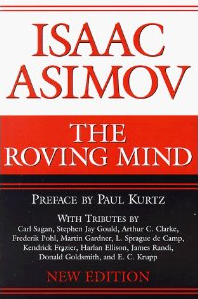 For more of Asimov’s cunning insight on the role of science and creativity in education, we highly recommendThe Roving Mind — a compelling collection of 62 edifying essays on everything from creationism to censorship to the philosophy of science, in which Asimov predicts with astounding accuracy not only the technological developments of the future but also the complex public debates they have sparked, from cloning to stem-cell research.
For more of Asimov’s cunning insight on the role of science and creativity in education, we highly recommendThe Roving Mind — a compelling collection of 62 edifying essays on everything from creationism to censorship to the philosophy of science, in which Asimov predicts with astounding accuracy not only the technological developments of the future but also the complex public debates they have sparked, from cloning to stem-cell research.Posted by Balqis Thaahaveetil at 13:36 0 comments
Why We Love: 5 Books on the Psychology of Love
Why We Love: 5 Books on the Psychology of Love
by Maria PopovaWhat Oscar Wilde has to do with Hippocrates and the neurochemistry of romance.
 It’s often said that every song, every poem, every novel, every painting ever created is in some way “about” love. What this really means is that love is a central theme, an underlying preoccupation, in humanity’s greatest works. But what exactly islove? How does its mechanism spur such poeticism, and how does it lodge itself in our minds, hearts and souls so completely, so stubbornly, as to permeate every aspect of the human imagination? Today, we turn to 5 essential books that are “about” love in a different way — they turn an inquisitive lens towards this grand phenomenon and try to understand where it comes from, how it works, and what it means for the human condition.
It’s often said that every song, every poem, every novel, every painting ever created is in some way “about” love. What this really means is that love is a central theme, an underlying preoccupation, in humanity’s greatest works. But what exactly islove? How does its mechanism spur such poeticism, and how does it lodge itself in our minds, hearts and souls so completely, so stubbornly, as to permeate every aspect of the human imagination? Today, we turn to 5 essential books that are “about” love in a different way — they turn an inquisitive lens towards this grand phenomenon and try to understand where it comes from, how it works, and what it means for the human condition.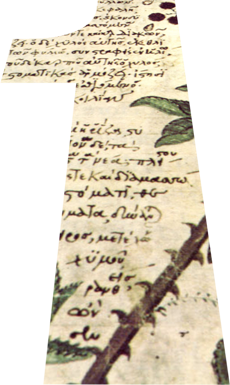 ESSAYS IN LOVE
ESSAYS IN LOVE
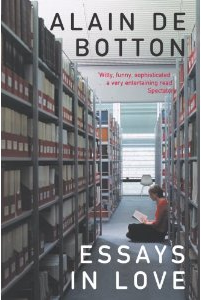 No superlative is an exaggeration ofAlain de Botton‘s humble brilliance spanning everything from philosophy to architecture. Essays in Love is precisely the kind of thoughtful, poetic, highly intelligent tome De Botton has grown famous for. Part novel, part philosophical inquiry into the origin and machinery of romantic love, the book follows the story of a love affair, tracing each stage — from the initial dopamine-driven lovesickness to the despair of love’s demise — through a beautiful blend of intellectual analysis and deeply human felt emotion. In De Botton’s classic style of networked knowledge, the narrative is sprinkled with references to and quotes from the major Western philosophers, yet equally reflective of his signature style of absorbing, highly readable narrative.
No superlative is an exaggeration ofAlain de Botton‘s humble brilliance spanning everything from philosophy to architecture. Essays in Love is precisely the kind of thoughtful, poetic, highly intelligent tome De Botton has grown famous for. Part novel, part philosophical inquiry into the origin and machinery of romantic love, the book follows the story of a love affair, tracing each stage — from the initial dopamine-driven lovesickness to the despair of love’s demise — through a beautiful blend of intellectual analysis and deeply human felt emotion. In De Botton’s classic style of networked knowledge, the narrative is sprinkled with references to and quotes from the major Western philosophers, yet equally reflective of his signature style of absorbing, highly readable narrative.Every fall into love involves [to adapt Oscar Wilde] the triumph of hope over self-knowledge. We fall in love hoping that we will not find in the other what we know is in ourselves – all the cowardice, weakness, laziness, dishonesty, compromise and brute stupidity. We throw a cordon of love around the chosen one, and decide that everything that lies within it will somehow be free of our faults and hence lovable. We locate inside another a perfection that eludes us within ourselves, and through union with the beloved, hope somehow to maintain [against evidence of all self-knowledge] a precarious faith in the species.”
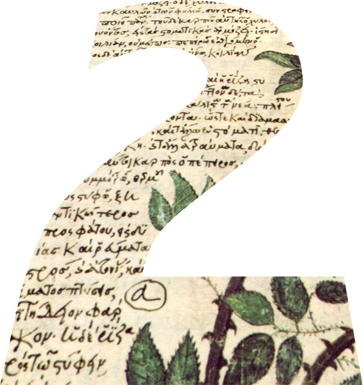 WHY WE LOVE
WHY WE LOVE
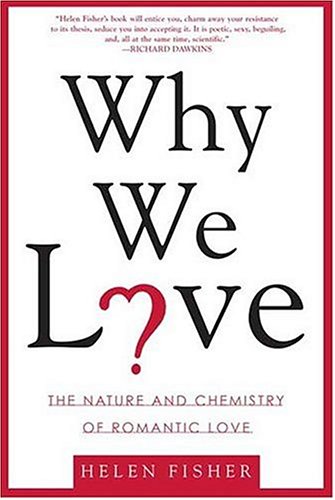 You might recall biological anthropologist Helen Fisher‘s work from this fascinatingdiscussion of how antidepressants impact the experience of romantic love. That’s just one of a myriad equally fascinating facets of love Fisher dissects in Why We Love: The Nature and Chemistry of Romantic Love — a journey into the mind’s blend of neurochemistry and storytelling, the hormones and neurotransmitters that make us feel certain emotions, and the stories we choose to tell ourselves about those emotions. Fisher outlines the three key components of love, each involving different but connected brain systems — lust, driven by androgens and estrogens, the craving for sexual gratification; attraction, characterized by high dopamine and norepinephrine levels and low serotonin, euphoria when things are going well and terrible mood swings when they’re not, focused attention, obsessive thinking, and intense craving for the individual; and attachment, commandeered by the hormones oxytocin and vasopressin and associated with the sense of calm, peace, and stability one feels with a long-term partner — and brings a researcher’s lens to fundamental questions about passion and obsession, joy and jealousy, monogamy and divorce.
You might recall biological anthropologist Helen Fisher‘s work from this fascinatingdiscussion of how antidepressants impact the experience of romantic love. That’s just one of a myriad equally fascinating facets of love Fisher dissects in Why We Love: The Nature and Chemistry of Romantic Love — a journey into the mind’s blend of neurochemistry and storytelling, the hormones and neurotransmitters that make us feel certain emotions, and the stories we choose to tell ourselves about those emotions. Fisher outlines the three key components of love, each involving different but connected brain systems — lust, driven by androgens and estrogens, the craving for sexual gratification; attraction, characterized by high dopamine and norepinephrine levels and low serotonin, euphoria when things are going well and terrible mood swings when they’re not, focused attention, obsessive thinking, and intense craving for the individual; and attachment, commandeered by the hormones oxytocin and vasopressin and associated with the sense of calm, peace, and stability one feels with a long-term partner — and brings a researcher’s lens to fundamental questions about passion and obsession, joy and jealousy, monogamy and divorce.Sample her work with this fantastic TED talk on the brain in love:
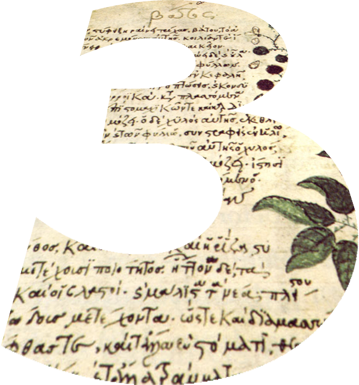 THE PSYCHOLOGY OF LOVE
THE PSYCHOLOGY OF LOVE
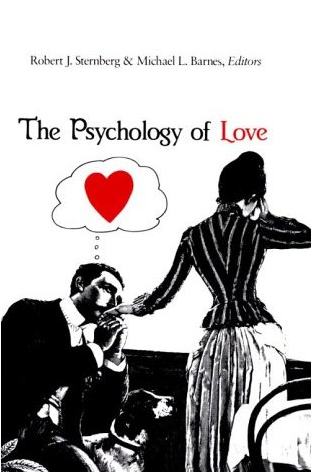 Originally written in 1988, The Psychology of Love is an anthology of 16 academic, though highly readable, papers dissecting various aspects of love. The collection is divided into five parts, each focusing on a specific facet of understanding love, from global theories that explain the phenomenon, to the psychology of relationship maintenance, to a critical overview of the field of love research.
Originally written in 1988, The Psychology of Love is an anthology of 16 academic, though highly readable, papers dissecting various aspects of love. The collection is divided into five parts, each focusing on a specific facet of understanding love, from global theories that explain the phenomenon, to the psychology of relationship maintenance, to a critical overview of the field of love research.For many people, love is the most important thing in their lives. Without it, they feel as though their lives are incomplete. But what is “it”? This question has been addressed by poets, novelists, philosophers, theologians, and, of course, psychologists, among others. This book presents the attempts of contemporary psychologists whose field of expertise is the study of love and close relationships to figure out just what love is.”
The book is best-read in tandem with The New Psychology of Love, the 2008 follow-up to the original title — a priceless parallel that captures how scientific and technological innovation has improved and, in some cases, shifted our understanding of love’s psychological underbelly, and perhaps more importantly, the curious fact that nearly 25 years later, we still have no succinct and singular definition of “love.”
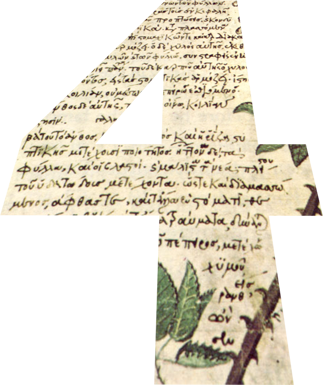 FALLING IN LOVE
FALLING IN LOVE
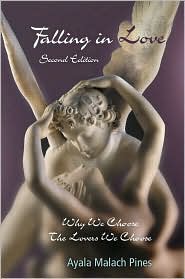 Have you ever encountered a couple with disproportionately unequal attraction levels, only to find yourself thinking that the less-attractive person “must be really funny” or “is probably some sort of genius” or some other rational explanation of the seemingly mismatched pairing? In Falling in Love: Why We Choose the Lovers We Choose, social psychologist and researcher Ayala Malach Pines tackles this and many other mysteries of the psychology of mate selection through a masterfully woven mesh of social and clinical approaches to understanding romance. The book extracts its key insights from three case studies: An interview-based study of 100 romantic relationships, a cross-cultural, data-driven juxtaposition of American and Israeli accounts of falling in love, and another interview series of 100 couples examining their reasons for falling in love in the context of turmoil later in the relationship.
Have you ever encountered a couple with disproportionately unequal attraction levels, only to find yourself thinking that the less-attractive person “must be really funny” or “is probably some sort of genius” or some other rational explanation of the seemingly mismatched pairing? In Falling in Love: Why We Choose the Lovers We Choose, social psychologist and researcher Ayala Malach Pines tackles this and many other mysteries of the psychology of mate selection through a masterfully woven mesh of social and clinical approaches to understanding romance. The book extracts its key insights from three case studies: An interview-based study of 100 romantic relationships, a cross-cultural, data-driven juxtaposition of American and Israeli accounts of falling in love, and another interview series of 100 couples examining their reasons for falling in love in the context of turmoil later in the relationship.Is love really blind? A large body of theory and research, as well as my own research and many years of clinical work, have convinced me that the answer to this question is a firm no!”
From whether proximity is the hidden matchmaker of true romance to how conscious choices increase the likelihood of finding “true love,” Falling in Loveis deeply fascinating yet warmly written, devoid of the hollow ring of academic pontification without compromising the rigor of the research or the depth of its conclusions.
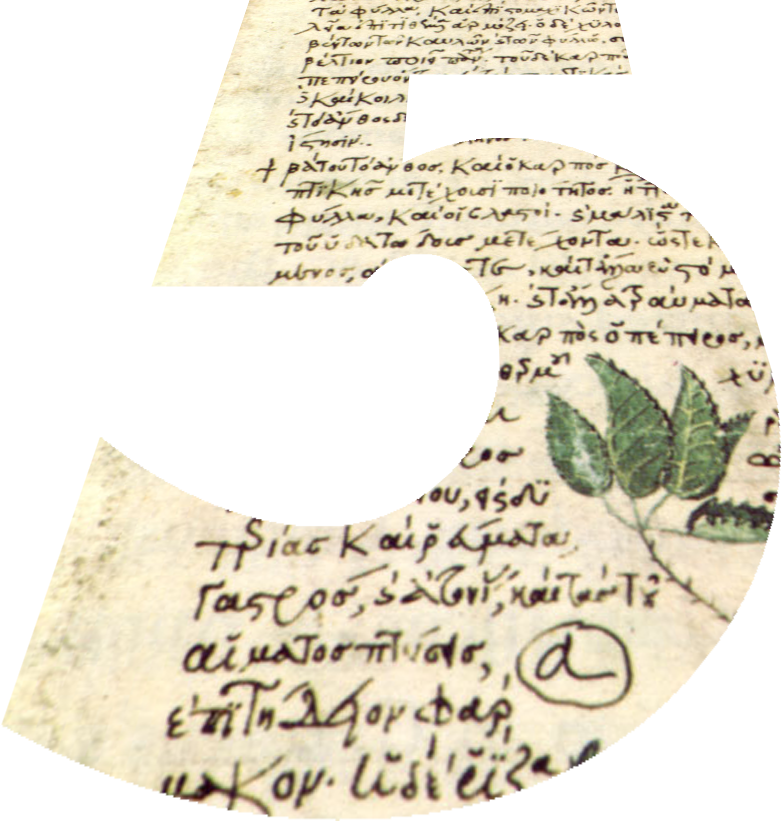 A GENERAL THEORY OF LOVE
A GENERAL THEORY OF LOVE
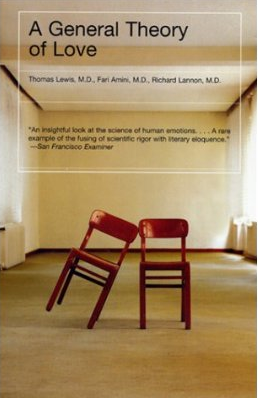 Besides having a cover the epitome of design’s capacity for communicating powerful concepts with brilliant visual simplicity, A General Theory of Love by psychiatrists Thomas Lewis,Fari Amini, and Richard Lannon is also a first-of-its-kind synthesis of research and poeticism, bringing a social science eye to the natural history of the grandest emotion.
Besides having a cover the epitome of design’s capacity for communicating powerful concepts with brilliant visual simplicity, A General Theory of Love by psychiatrists Thomas Lewis,Fari Amini, and Richard Lannon is also a first-of-its-kind synthesis of research and poeticism, bringing a social science eye to the natural history of the grandest emotion.Since the dawn of our species, human beings in every time and place have contended with an unruly emotional core that behaves in unpredicted and confusing ways. Science has been unable to help them. The Western world’s first physician, Hippocrates, proposed in 450 B.C. that emotions emanate from the brain. He was right — but for the next twenty-five hundred years, medicine could offer nothing further about the details of emotional life. Matters of the heart were matters only for the arts — literature, song, poetry, painting, sculpture, dance. Until now.”
Eloquent and eye-opening, A General Theory of Love illuminates “hard science” findings across brain function and neurochemistry though a humanistic prism that offers a richer, deeper understanding of the heart’s will.
Posted by Balqis Thaahaveetil at 13:34 0 comments
The Book of Symbols: Carl Jung’s Catalog of the Unconscious
by Kirstin ButlerWhy Sarah Palin identifies with the grizzly bear, or what the unconscious knows but doesn’t reveal.
 A primary method for making sense of the world is by interpreting its symbols. We decode meaning through images and, often without realizing, are swayed by the power of their attendant associations. A central proponent of this theory, iconic Swiss psychoanalyst Carl Gustaf Jung, made an academic case for it in the now-classic Man and His Symbols, and a much more personal case in The Red Book.
A primary method for making sense of the world is by interpreting its symbols. We decode meaning through images and, often without realizing, are swayed by the power of their attendant associations. A central proponent of this theory, iconic Swiss psychoanalyst Carl Gustaf Jung, made an academic case for it in the now-classic Man and His Symbols, and a much more personal case in The Red Book.Beginning in the 1930s, Jung’s devotees started collecting mythological, ritualistic, and symbolic imagery under the auspices of The Archive for Research in Archetypal Symbolism (ARAS), an organization with institutes throughout the U.S. In the intervening 80 years, the ARAS archive has grown to contain more than 17,000 images and 90,000 pages of cultural and psychological scholarly commentary on pictorial archetypes, all of which is now fantastically, fully digitized.
You can browse through ARAS via a list of common archetypes, or search by word, producing a cross-indexed result with thumbnail images and a timeline of where and when that idea appeared throughout history.
Nonetheless, to access this treasure trove you still have to be a member of ARAS online, or take trip to one of its four physical locations. Enter publishing powerhouse Taschen, and the extraordinary release — 14 years in the making — of The Book of Symbols: Reflections on Archetypal Images. An 800-page reference tome of ARAS’s archival riches, The Book of Symbols is epic in every sense — its ambition is nothing less than to represent the pictorial patrimony of human history.
The book divides its images into five categories, “Animal World,” “Creation and Cosmos,” “Human World,” “Plant World,” and “Spirit World,” and contains 350 essays from experts in art, folklore, literature, psychology, and religion — a systematic exploration of symbols and their meanings throughout history and an unparalleled reference guide to visual experience from every era and part of the world.
Whatever the nature of your own work, from advertising to zoology, you’ll find yourself endlessly fascinated and illuminated by The Book of Symbols and its beautiful exploration of the origins, forms, and influence of our common visual culture.
Posted by Balqis Thaahaveetil at 13:17 0 comments
Subscribe to:
Posts (Atom)











 Kirstin Butler is writing an adaptation of Gogol for the Google era called
Kirstin Butler is writing an adaptation of Gogol for the Google era called 